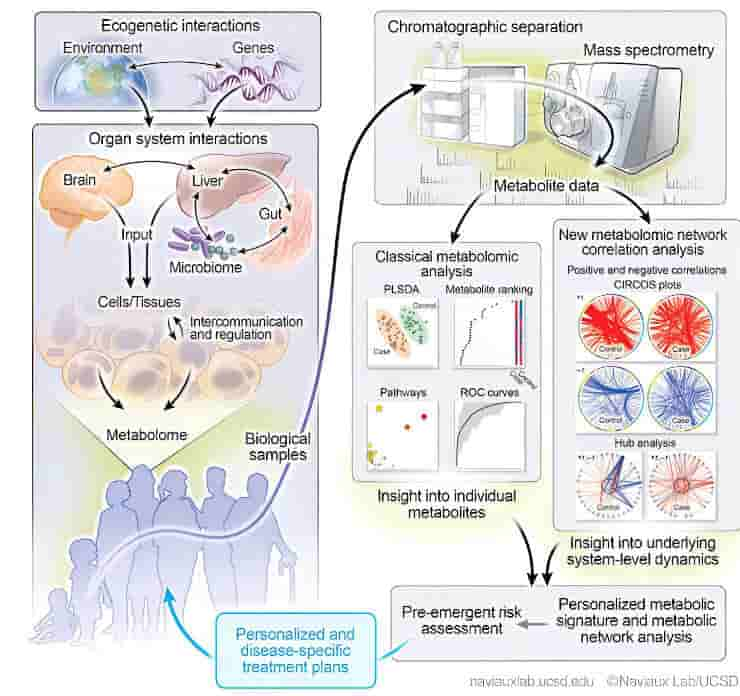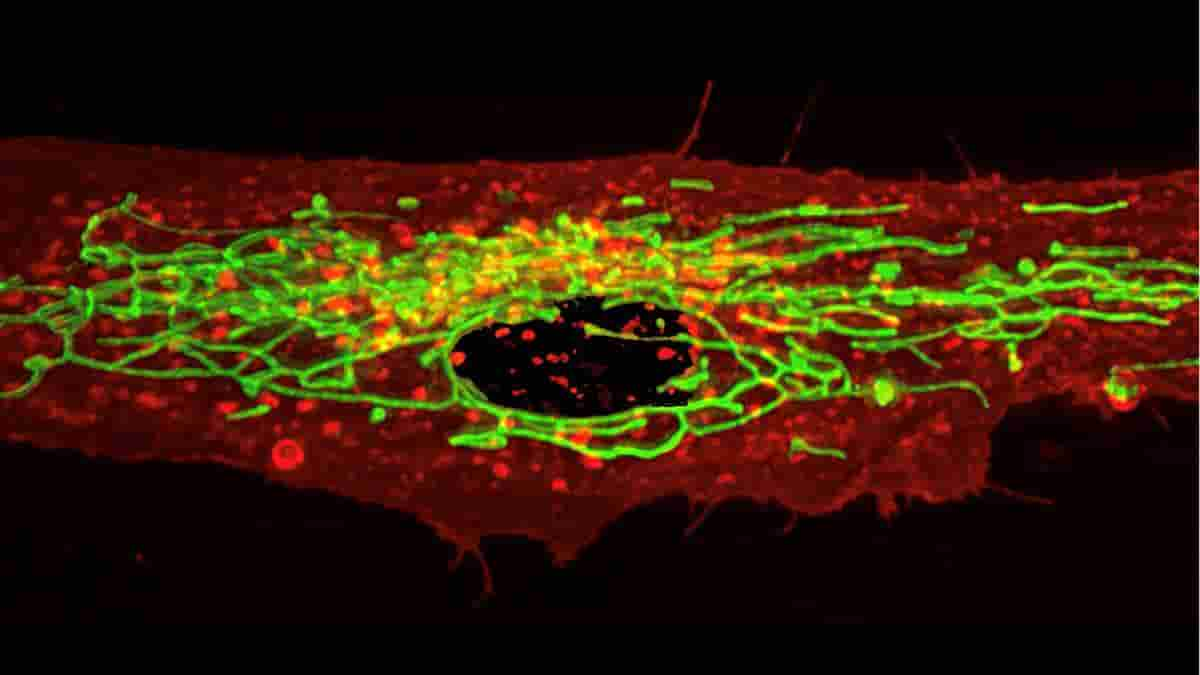In the United States alone, 16.1 million adults suffer from major depression, which costs $210 billion each year. While the major symptoms of depression are psychological in nature, scientists and clinicians have come to realize that depression is a complicated disease with physical consequences throughout the body.
Measuring markers of cellular metabolism, for example, has become an important approach to studying mental illnesses and developing new methods of diagnosing, treating, and preventing them.
In a new study, researchers at the University of California San Diego School of Medicine have progressed this line of research, demonstrating a link between cellular metabolism and depression. They discovered that patients suffering from depression and suicidal ideation have detectable chemicals in their blood that could aid in identifying individuals who are at a higher risk of being suicidal.
Metabolomic Approach To Saving Lives
The findings could help personalize mental health care and potentially identify new targets for future drugs. The researchers additionally found gender disparities in how sadness affects cell metabolism.
“Mental illnesses like depression have impacts and drivers well beyond the brain. Prior to about ten years ago, it was difficult to study how the chemistry of the whole body influences our behavior and state of mind, but modern technologies like metabolomics are helping us listen in on cells’ conversations in their native tongue, which is biochemistry,”
said Robert Naviaux, MD, Ph.D., a professor in the Department of Medicine, Pediatrics and Pathology at UC San Diego School of Medicine.

While many people with depression experience improvement with psychotherapy and medication, some people’s depression is treatment-refractory, meaning treatment has little to no impact. The majority of patients with treatment-resistant depression have suicidal thoughts, and as many as 30% of them will attempt suicide at least once in their lifetime.
“We’re seeing a significant rise in midlife mortality in the United States, and increased suicide incidence is one of many things driving that trend. Tools that could help us stratify people based on their risk of becoming suicidal could help us save lives,
said Naviaux.
Diagnostics and More
The researchers analyzed the blood of 99 study participants with treatment-refractory depression and suicidal ideation, as well as an equal number of healthy controls. Among the hundreds of distinct biochemicals detected in these people’s blood, they discovered five that could be utilized as a biomarker to classify patients with treatment-resistant depression and suicidal ideation. However, which five might be used varies between men and women.
“If we have 100 people who either don’t have depression or who have depression and suicidal ideation, we would be able to correctly identify 85–90 of those at greatest risk based on five metabolites in males and another five metabolites in females. This could be important in terms of diagnostics, but it also opens up a broader conversation in the field about what’s actually leading to these metabolic changes,”
expalined Naviaux.
Mitochondrial Dysfunction
While male and female blood metabolism differed significantly, some metabolic markers of suicidal ideation were constant across both sexes. This included biomarkers for mitochondrial dysfunction, which occurs when our cells’ energy-producing organelles fail.
Mitochondria are some of the most important structures of our cells, and changed mitochondrial functions occur in a host of human diseases,
Naviaux said.
Mitochondria are responsible for the production of ATP, the fundamental energy currency of all cells. ATP is also a crucial chemical for cell-to-cell communication, and the researchers believe that this function is particularly dysregulated in patients who have suicidal thoughts.
“When ATP is inside the cell, it acts like an energy source, but outside the cell, it is a danger signal that activates dozens of protective pathways in response to some environmental stressor. We hypothesize that suicide attempts may actually be part of a larger physiological impulse to stop a stress response that has become unbearable at the cellular level,”
said Naviaux.
No Magic Bullets
Because some of the metabolic deficiencies identified in the study were in supplements, such as folate and carnitine, the researchers are interested in investigating the possibility of individualizing depression treatment with these supplements to help fill in the metabolic gaps that are required for recovery. Naviaux emphasizes that these supplements are not cures.
“None of these metabolites are a magic bullet that will completely reverse somebody’s depression,” said Naviaux. “However, our results tell us that there may be things we can do to nudge the metabolism in the right direction to help patients respond better to treatment, and in the context of suicide, this could be just enough to prevent people from crossing that threshold.”
In addition to suggesting a new approach to personalized medicine for depression, the research could help scientists discover new drugs that target mitochondrial dysfunction, which could have far-reaching implications for human health in general.
Because dealing with an illness for years at a time can be extremely stressful, many chronic diseases are comorbid with depression.
“If we can find ways to treat depression and suicidal ideation on a metabolic level, we may also help improve outcomes for the many diseases that lead to depression. Many chronic illnesses, such as post-traumatic stress disorder and chronic fatigue syndrome, are not lethal themselves unless they lead to suicidal thoughts and actions. If metabolomics can be used to identify the people at greatest risk, it could ultimately help us save more lives,”
said Naviaux.
Abstract
Peripheral blood metabolomics was used to gain chemical insight into the biology of treatment-refractory Major Depressive Disorder with suicidal ideation, and to identify individualized differences for personalized care. The study cohort consisted of 99 patients with treatment-refractory major depressive disorder and suicidal ideation (trMDD-SI n = 52 females and 47 males) and 94 age- and sex-matched healthy controls (n = 48 females and 46 males). The median age was 29 years (IQR 22–42). Targeted, broad-spectrum metabolomics measured 448 metabolites. Fibroblast growth factor 21 (FGF21) and growth differentiation factor 15 (GDF15) were measured as biomarkers of mitochondrial dysfunction. The diagnostic accuracy of plasma metabolomics was over 90% (95%CI: 0.80–1.0) by area under the receiver operator characteristic (AUROC) curve analysis. Over 55% of the metabolic impact in males and 75% in females came from abnormalities in lipids. Modified purines and pyrimidines from tRNA, rRNA, and mRNA turnover were increased in the trMDD-SI group. FGF21 was increased in both males and females. Increased lactate, glutamate, and saccharopine, and decreased cystine provided evidence of reductive stress. Seventy-five percent of the metabolomic abnormalities found were individualized. Personalized deficiencies in CoQ10, flavin adenine dinucleotide (FAD), citrulline, lutein, carnitine, or folate were found. Pathways regulated by mitochondrial function dominated the metabolic signature. Peripheral blood metabolomics identified mitochondrial dysfunction and reductive stress as common denominators in suicidal ideation associated with treatment-refractory major depressive disorder. Individualized metabolic differences were found that may help with personalized management.
Reference:
- Pan, L.A., Naviaux, J.C., Wang, L. et al. Metabolic features of treatment-refractory major depressive disorder with suicidal ideation. Transl Psychiatry 13, 393 (2023). Doi: 10.1038/s41398-023-02696-9
Top image: mitochondria (green) form complex tubular networks that help them distribute energy throughout the cell. Disruption of these mitochondrial networks is a hallmark of many human diseases. Credit: UC San Diego Health Sciences
